#Eastern Roman Empire
Text

✨☦️ A μ o γ o ς ☦️✨
😇🙏 😇🙏 😇🙏 😇🙏
[source]
#this is my attempt at a transliteration of Amogus from Latin to Greek#corrections welcome#among us#dalle#mosaic#eastern roman empire#greek orthodox#dalle mini
12K notes
·
View notes
Text

Byzantine Gold Bracelet w/ Stamped Medallions
6th C.
#Byzantine Gold Bracelet w/ Stamped Medallions#6th C.#gold#gold jewelry#ancient jewelry#ancient artifacts#archeology#archeolgst#history#history news#ancient history#ancient culture#ancient civilizations#byzantine empire#eastern roman empire
270 notes
·
View notes
Text

The Varangian Guard defeats the Pechenegs at the Battle of Beroia 1122 AD
by Giuseppe Rava
#byzantine empire#varangian guard#art#giuseppe rava#battle of beroia#pechenegs#byzantine#byzantium#varangian#eastern roman empire#history#varangians#byzantines#imperial#imperial guard#empire#roman#europe#european#bulgaria#john ii komnenos#pecheneg#middle ages#medieval#axe#viking#anglo saxon#vikings#norsemen#stara zagora
148 notes
·
View notes
Text

Byzantium
#illustration#artists on tumblr#my art#digital art#women artists#drawing#art#procreate art#female artists#character design#byzantine empire#eastern roman empire#historical fashion
633 notes
·
View notes
Text
TIL from a podcast featuring historian and Byzantine archaeologist Yannis Theoharis:
Athens was one of the most religiously conservative cities of the Byzantine Empire. It adhered to the ancient Greek religion for longer than most other areas. Contrary to popular belief, its eventual conversion to Christianity did not happen violently. Christianity was getting more and more ground amongst the believers progressively. Meanwhile, the ancient temples and shrines were progressively emptying but as long as there were believers they were functioning properly and had guards and went through restoration works and all, as stated by Neoplatonic philosopher Proklos (with the exception of nude sculptures which had been destroyed already by proto-Christians). The historian also claims the conversion of the temples to churches happened later than what was previously believed, around the 7th-9th centuries. As the vast majority of the population had eventually converted to Christianity, the temples were left abandoned. The empire ordered their conversion to churches so that funding their preservation could be justified. Furthermore, there wasn’t as much of violent banning of ancient schools as it was thought. Justinian did not ban the function of the Neoplatonic school in Athens but ceased the state funding unless the school accepted to add Christian theology to its curriculum. The Neoplatonic school refused but it was not banned. It kept functioning using its own private funds until this wasn’t enough and the school had to close. Evidence for this is that it is documented that the school functioned for several decades or more than a century (don’t remember exactly) after Justinian’s imperial command, which was previously viewed as an immediate or violent shutdown. Meanwhile, the Neoplatonic school in Alexandria (in Egypt) agreed to add Christian theology to its curriculum and it kept functioning undisturbed until the 7th century and the Arab conquest.
Also, he has more insight into the similarities observed between Eastern / Greek and even all Orthodoxy and the Ancient Greek religion, such as idol / icon worship, lesser deity / saint worship, virgin female deity / super saint worship, patron gods / saints etc He says there was an interesting cycle of Christianised Hellenism followed by Hellenized Christianity. Some of these elements of Christian Orthodoxy were emphasized more than in the early years of Proto-Christianity or even exaggerated by the Byzantine Greek Christians in order to attract the pagan Greeks and make them understand more easily the philosophy of the new religion and find common ground between them. It worked.
Lastly, he disputed the dated assumptions that the Visigoth king Alaric I was assisted by monks to destroy Athens during his invasion in 396. This was falsely concluded because in documents it was found that Alaric was accompanied by men clad in black. Theoharis says these were actually Thracian soldiers (Alaric indeed fared long in Thrace and the Thracians were by large mercenaries) and supports it is very unlikely based on historical evidence of the time that Athenian or Greek Christians would collaborate with a Visigoth invader to help him destroy historical areas of Athens, even if they were pagan.
These are the most important bits from memory, I am linking the podcast here, it is in Greek.
#Greece#Europe#history#Greek history#Byzantine history#Christian orthodoxy#Ancient Greek religion#Greek orthodoxy#Eastern Orthodoxy#Byzantine empire#eastern Roman Empire#justinian#Alaric I#proklos#neoplatonism#Athens#attica#central Greece#Sterea Hellas#mainland
86 notes
·
View notes
Text


Spangenhelm Helmet from Steinbrunn, Austria dated to around 500 CE on display at the Weltmuseum in Vienna, Austria
This helmet basically shows the same design features as the six-piece Spangehelm from Sveti Vid in Dalmatia. It was excavated in 1965 in Steinbrunn in Burgenland, the largest preserved group of helmets from the entire Middle Ages. Culturally, the Spangenhelm largely corresponds to that of the Late Roman and Eastern Roman army, in which both Germanic soldiers and nomad cavalrymen from Iran served.
The close connection between this group of helmets and the Ostrogothic court of Theodoric the Great is possible, but cannot be proven by current evidence. Theodoric spent his youth as apolitical hostage in Constantinople and gained the favour of Emperor Leo I. It is possible these helmets were gifts from the Eastern Roman Empire.
Photographs taken by myself 2022
#armour#art#fashion#medieval#migration period#eastern roman empire#byzantine empire#austrian#austria#military history#archaeology#weltmuseum#vienna#barbucomedie
116 notes
·
View notes
Text

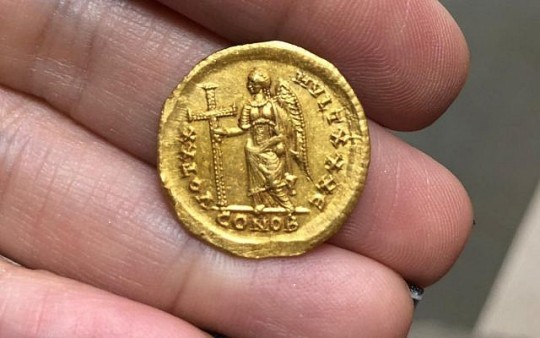
Gold coin from the reign of Emperor Thedosius II uncovered in Israel in 2019, Eastern Roman Empire, circa 401-450 AD
423 notes
·
View notes
Photo

Map of Eastern Roman Empire in 641 after the death of Emperor Heraclius.
89 notes
·
View notes
Text
Alternate timeline where instead of that weird weeb phase with the Harajuku Girls, Gwen Stefani had a "Byzantine empress" aesthetic phase and hired a bunch of burly male dancers from Scandinavia as her Varangian Guard
@echofromtheabyss
#take me back to constantinople#gwen stefani#shitpost#history#eastern roman empire#byzantine empire#byzantine#byzantium
50 notes
·
View notes
Note
What do you think of Justinian's reign as emperor? A new biography of him that gives fairly positive conclusions on his reign just came out at around the same time as Anthony Kaldelis new history of the byzantines which has a basically equally negative reading of the same subject.
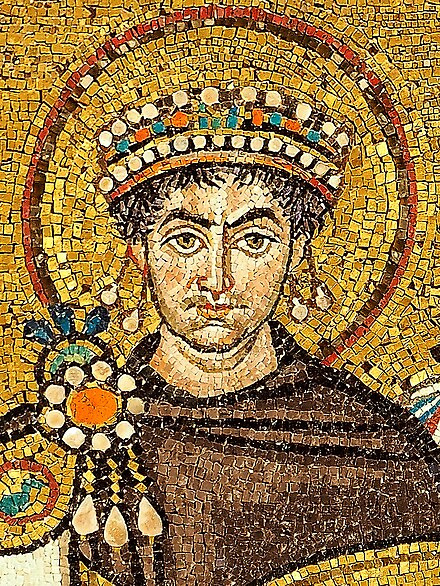
An odd mix of extreme competence in many areas of governance, but so much of that energy was directed at an impossible and arguably counter-productive goal.
He should have stuck with North Africa and the Mediterranean islands so as to preserve his resources for the more important conflict with Khosrau of Persia, rather than waste blood and treasure trying to conquer an empty Rome.
35 notes
·
View notes
Text
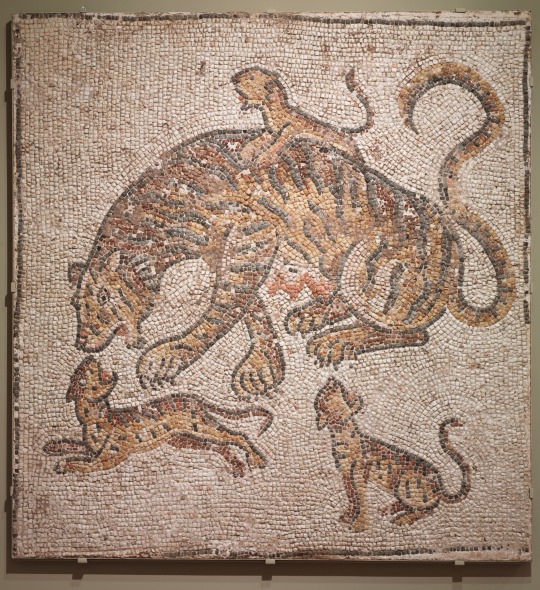
Tigress and Cubs, 300s. Italy, Roman, Eastern Roman Empire, 4th century.
#tiger#tigress#tiger cub#wild cats#rome#ancient rome#roman art#tile art#italy#4th century#animals#animal art#eastern roman empire#history#ancient history
25 notes
·
View notes
Text

It’s been bizarre watching Twitter lose its mind over this TV show, but at least I got to enjoy this meme. [source]
109 notes
·
View notes
Text
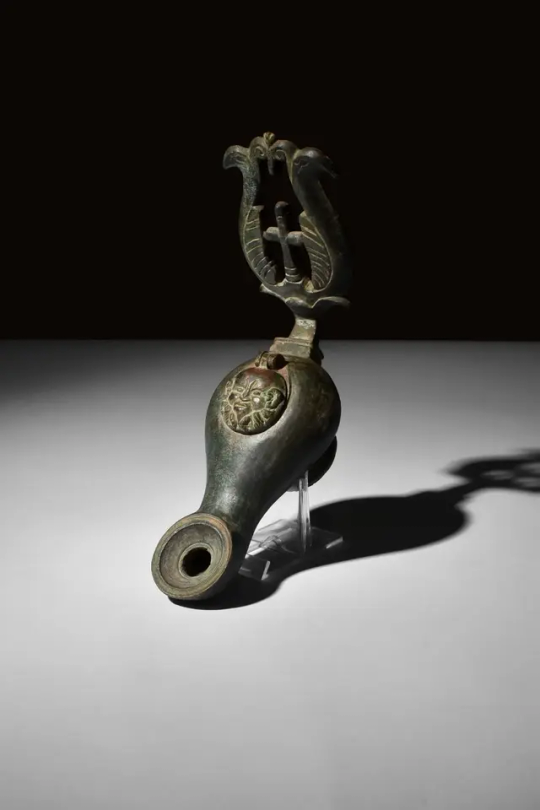
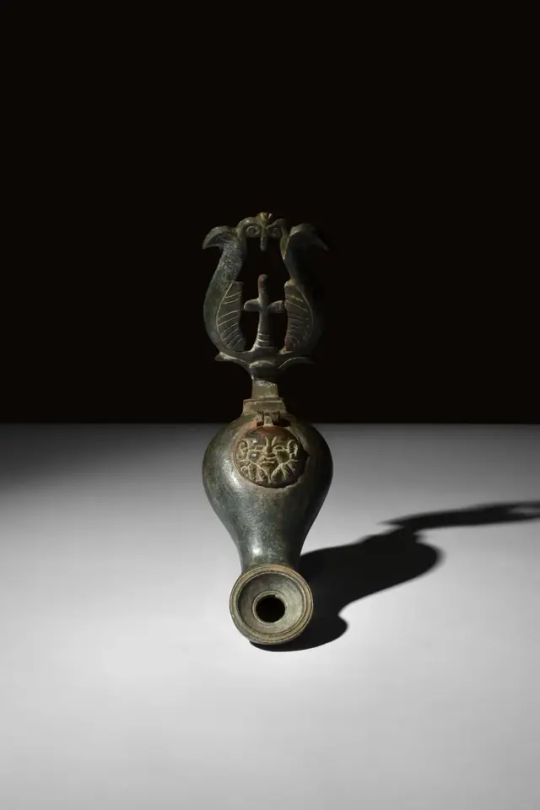
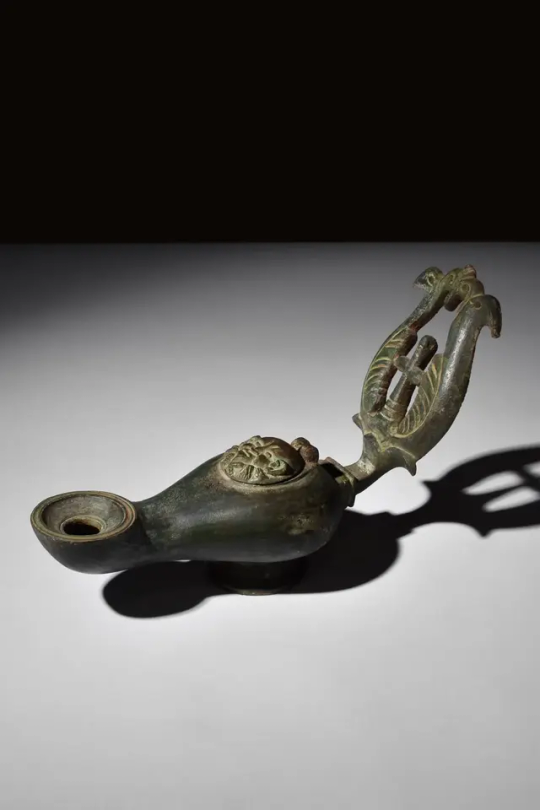
BYZANTINE BRONZE OIL LAMP WITH CROSS HANDLE
Ca. 4th-6th century AD
#BYZANTINE BRONZE OIL LAMP WITH CROSS HANDLE#Ca. 4th-6th century AD#ancient oil lamp#ancient artifacts#archeology#archeolgst#history#history news#ancient history#ancient culture#ancient civilizations#eastern roman empire#roman history#roman empire#roman art
165 notes
·
View notes
Text

Hypatia by Julius Kronberg
#hypatia#art#julius kronberg#philosophy#philosopher#scrolls#alexandria#history#antiquity#roman#roman empire#egypt#neoplatonist#astronomer#mathematician#europe#european#eastern roman empire#paganism#pagan#ancient greece#ancient rome#greek#ancient greek#neoplatonism
108 notes
·
View notes
Text
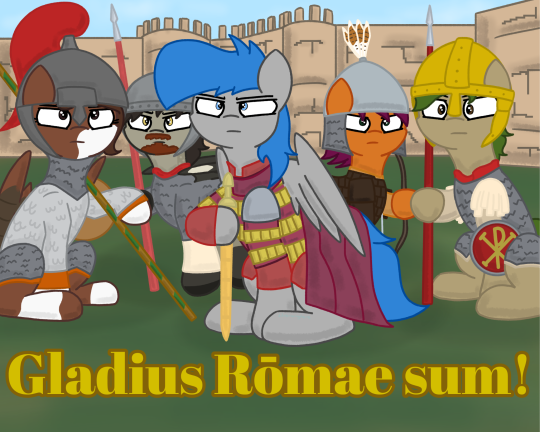
Gladius Rōmae imperī sum,
Ubi’st nostrum imperium?
Nē plōrā, mater Rōma,
Dēnuō flōrēbis,
Cīvis Romānus sum,
Sed sine imperiō sum,
Sanguine barbarōrum,
Renāta erit Rōma!
- Belisarius by Farya Faraji
----------------------------------------
Translation:
I am Rome's sword. Where is our empire?
Weep not, mother Rome, again shall you prosper.
A citizen of Rome I am, yet without an empire I am,
In barbarians' blood shall Rome be reborn!
----------------------------------------
Belisarius was a general in the Eastern Roman Empire who reconquered North Africa from the Vandals, and Italy from the Ostrogoths. In the latter campaign, his army managed to return the eternal city of Rome back to the Empire. He is often considered as a great commander of the Eastern Roman Empire, as well as the last great Roman general.
----------------------------------------
Featuring:
@temper-temper as a cataphractarii
@randomgurustuffs as a foederati
@askpokeeosin as a Hun mercenary
@flashmod as a bucellarii
----------------------------------------
Like my art? Consider supporting me on Ko-fi!
#Art#Random Art#temper-temper#randomgurustuffs#Silver Wing#askpokeeosin#flashmod#MLP#My Little Pony#Pegasus#Pegasi#Earth Pony#Earth Ponies#MLP Art#MLP OC#History#Belisarius#Roman History#Eastern Roman Empire#Gothic War
31 notes
·
View notes
Note
What was women's position in the Byzantine Empire? I haven't searched that much, but it seems like her position wasn't any different from Ancient Greece, where they were expected to be modest, silent and it was generally preferable not to be heard (at least, women from aristocratic families).
Well you won’t find easily a medieval state which did not want women to be modest and quiet.
In spite of that, no that’s not true. The place of the woman in the society improved considerably in Byzantine times compared to the Classical era. As a sidenote, perhaps we should not generalize about Classical Greece either, especially when we apply the reality of Athens to all the Greek world without enough evidence that this is historically accurate, at a time when Athens was extremely obsessed with ¨male perfection¨.
Based on our view of things nowadays, it might seem counterintuitive, however Christianity played a huge role in this improvement. You see, the Bible through its scriptures and also the very example of Virgin Mary, whom the Byzantines (and later the Modern Greeks too) worshipped almost equally to Christ, as well as the church’s acknowledgement and veneration of women martyrs indiscriminately from men martyrs, made it clear that women were spiritually equally capable of achieving “théosis”, meaning resemble the image of God, in other words; sainthood. It was thus deemed important that women would be able to read and study the scriptures. As a result the Byzantine empire had the highest literacy rate of women in the Middle Ages.
Intercepting for those who might wonder: "But the Ancient Greek religion had gods and goddesses alike, so why wouldn't that improve the social status of women?". The answer is because in the Ancient Greek religion there was no concept of théosis, meaning any human's strive to achieve a moral perfection to resemble the image of God. The dynamics of gods and godesses were separate from those of the people, where women were left to be evaluated by and versus men alone.
Women were nowhere as confined as the women of classical Greece. Of course they should be good wives and mothers catering to their household first and foremost but they could participate in social events, festivals, go shopping, lather in the baths and have fun like men did. As wives, their status was also better, as according to Christianity all god-fearing men were supposed to be loyal to their wives and have no concubines. So, if a man really had no intention to be faithful at all, neither to his wife nor to the Christian teachings, he at least did it discreetly, and if he did not do even that, then he did not escape the judgement of the society. Divorce was hard for either spouse to ask, of course waaay more for women, but for example Justinian enforced an iconic law that if a couple wanted to take a divorce then BOTH spouses should go to monasteries and be celibate for life lol So you know, be cruel, but at least be indiscriminately cruel! 😂
Financially, dowries and inheritance remained a woman’s property after marriage unlike in classical times. If the husband died, it was the widow’s choice whether she would marry again or not and she was in charge of her children on her own whereas in classical times women had to marry their husband’s closest relative (to “protect” them and the property that had now passed on their own family). So, really no contest there. Women owned and ran businesses and signed contracts. They were employed in a wide range of professions.
As for the aristocrats, they had it much better than classical aristocrats. They did not work like lower class women, obviously, so they filled all that extra time by being pampered by their servants (female and male, sometimes eunuchs), who were usually exclusive to them. Depending on the lady’s interests, the servants would keep her entertained by playing music, reading to her, gossiping, grooming her etc Some women hired teachers to improve on their education on their own accord. Wives of important men were usually involved in political and diplomatic affairs and they were very interested in such matters. Educated women could be doctors (for women).
Nuns, who did not have the burden of taking care of the children and a husband, often became studious and pretty educated, with artistic concerns, like Kassiani. And to go back to the ask, there are accounts of Byzantine princesses being perceived in West Europe as “too talkative” and “too concerned with themselves”, so apparently Byzantium gave its aristocratic women a lot more liberty than, say, Classical Athens and also more than Western Europe did.
And then of course the Byzantine Empire was the only medieval state to have ever been reigned by four women on their own, and some of them were very consciously and ambitiously pursuing the throne. But even the empresses consorts, meaning the wives of the emperors, were also expected to be well acquainted with all the matters of the empire in case something happened to the emperor because they had to stand in his place temporarily or even serve as regents. From the 22 pages in Wikipedia about Byzantine regents, the 7 are about women, so one third, at least from the well known ones.
Women were also interested in their appearances and really took matters in their hands. Rich women would have special gardens cultivating flowers and spices to create their own perfumes. Michael Psellos writes about how Empress Zoe had essentially turned herself into a chemist, making the basements of the imperial palace a lab for perfumes and elixirs to maintain her youthful appearance.
And let’s end this with some quotes from Anna Komnene’s Alexiad (inspired by the Iliad she so loved), the chronicles of her father’s Emperor Alexius exploits in war.

12th-century manuscript of the Alexiad
The Alexiad is invaluable because it remains one of the richest sources of information historians possess about the military, social and imperial history of the Byzantine Empire.
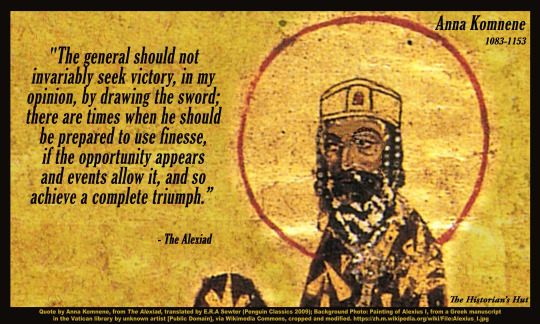




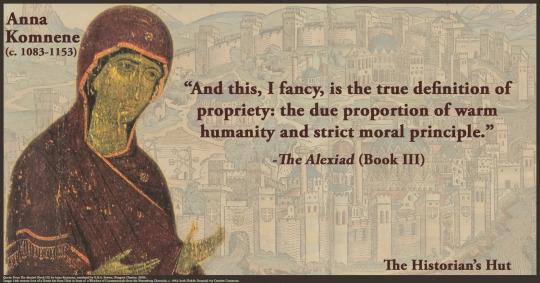

Ah I had written before about that stuff and I meant to write something short this time but I just can’t do it when it’s about Byzantium my love adefefajdhhajhf
#history#byzantine empire#eastern roman empire#women#byzantine history#byzantine culture#east roman empire#byzantine greek culture#greek history#greek culture#middle ages#women in history#anna komnene#anna komnene porphyrogennite#anna comnena#attichoney4u#ask#long post#tw long
70 notes
·
View notes